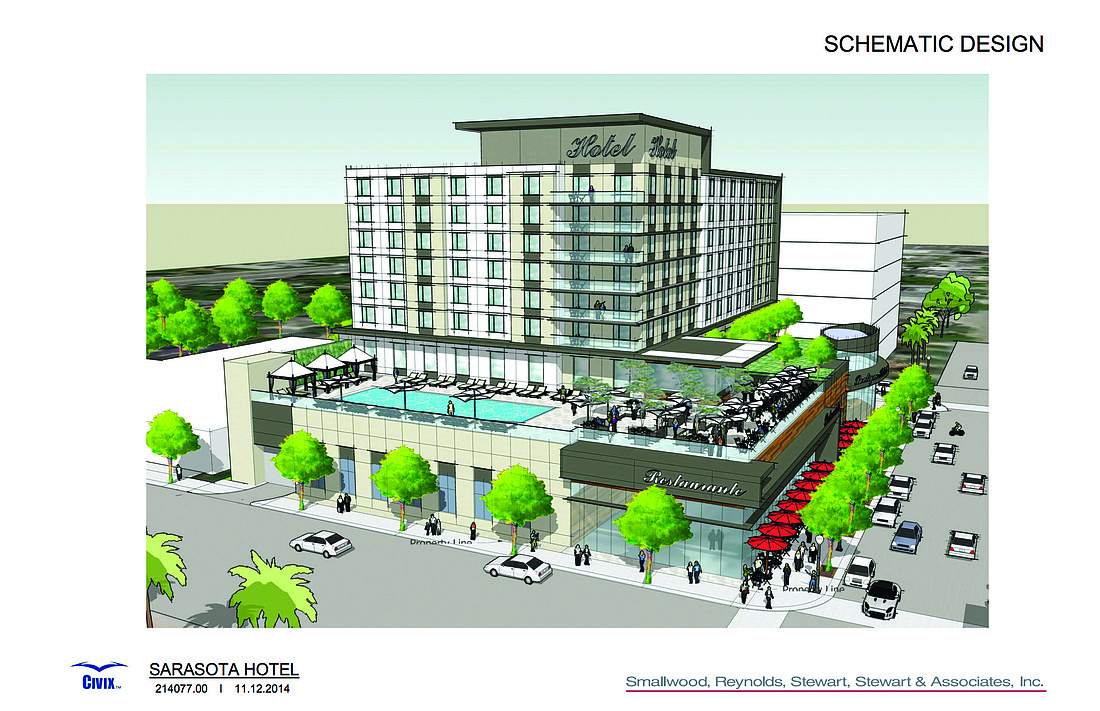- December 20, 2025
-
-
Loading

Loading

A long-dormant area, sitting in the shadow of downtown, is headed for a turnaround thanks to the outward expansion of growth from the heart of the city.
Right now, that’s Sarasota’s Rosemary District, where density increases and a handful of big-ticket projects have the city and investors confident that the area is set for revitalization in the imminent future.
But soon, some believe, the same could be true for the land east of U.S. 301. With a few projects in the pipeline — including a pair of townhome developments and a high-rise hotel — those people hope that the activity that has taken hold downtown could spread across Washington Boulevard and help grow a sleepy area.
Most recently, Largo-based developer Icon Residential presented plans for two residential projects in the area. Located at 2150 First St. and 41 N. School Ave., the developments would replace several vacant structures with a total of 75 townhomes.
John Harshman, a real estate broker involved with the 2014 sale of the School Avenue property, attributes developer interest in the area to the zoning designation in place. The area between U.S. 301 and School Avenue bound by Fruitville Road and Adams Lane is zoned downtown core. This means that acceptable uses include commercial, office and residential developments, with a density of up to 50 residential units per acre.
“It’s a pretty flexible zoning, but it’s an area in the past that hasn’t had a whole lot of attention,” Harshman said. “Other than the jail, there hasn’t been a whole lot of development there since Kane Plaza was built.”
Despite the lack of activity in recent years, others have also forecasted growth in that area of the city. Downtown Economic Development Coordinator Norm Gollub singled out the area east of U.S. 301 as a potential hotspot for new affordable housing developments, in part because the density and land values can better serve the demand for smaller units for service workers.
“East of Washington, you’re still within walking distance of downtown,” Gollub said. “I think there are edges of downtown that can add affordable housing.”
To help facilitate that growth, Gollub said he’d like to see improved pedestrian connections to the core downtown area. Harshman said natural forces are beginning to direct developers to that part of the city. In the past, those builders would focus on downtown and the bayfront. With land dwindling elsewhere, they’re re-evaluating their options.
“As those areas start to see heavier development and increasing values, you see the market kind of moving out to what had one point been viewed as tertiary locations, but now are viewed as closer to the heart of the action,” Harshman said.
Already, there are some other signs of increased activity in the area. At the northeast corner of Main Street and U.S. 301, developers plan to construct a 10-story, 150-room hotel by fall 2016. In March 2014, Bonita Springs-based investment fund TerraCap Partners II bought the 10-story Kane Plaza office building at 1 S. School Ave. for $11.5 million.
The city Urban Design Studio has endorsed the idea of reviving the city’s train lines to allow for a new light rail system at some point in the future. That would be another boon for the area, for the tracks pass just east of School Avenue. Urban Design Studio Director Karin Murphy has suggested that residential areas near public transit could receive density bonuses — an incentive that sparked residential development in the Rosemary District.
Harshman said the area also benefits from efforts to convert rails into trails, most notably via the extension of the Legacy Trail into the city of Sarasota and close to the area east of 301.
Taken together, he says, there are mounting reasons to build east of downtown — and he’s hearing increasing interest from developers.
“There are a lot of positives that maybe have been overlooked in the past in favor of some the other areas closer to downtown,” Harshman said.
“ ... you see the market kind of moving out to what had one point been viewed as tertiary locations, but now are viewed as closer to the heart of the action.”
— John Harshman, real estate broker